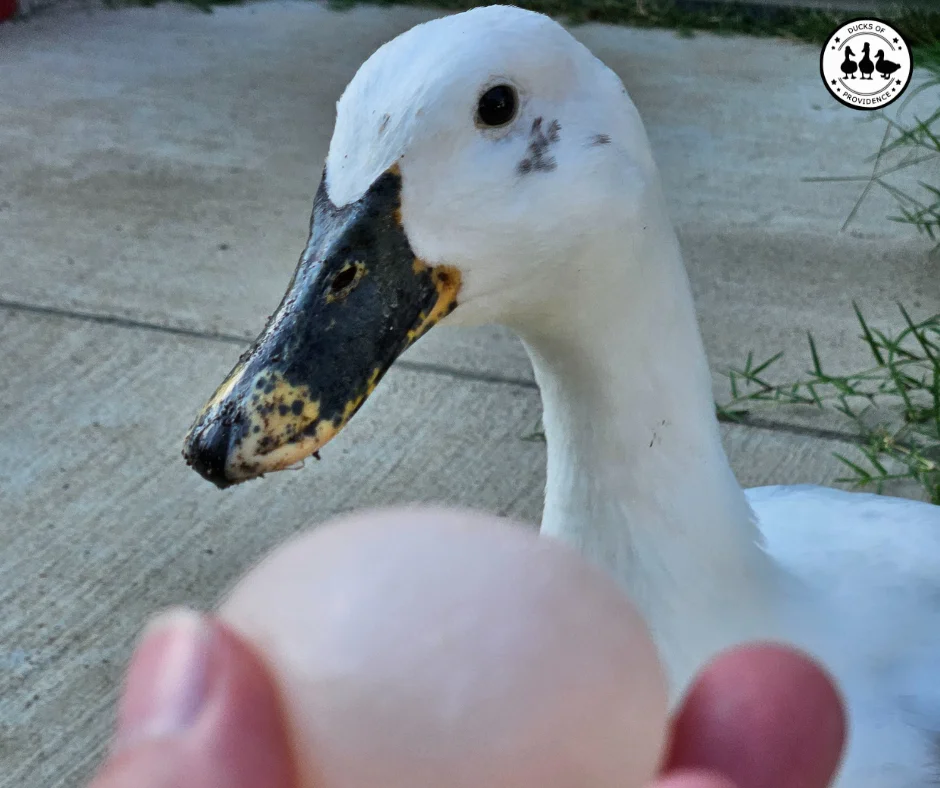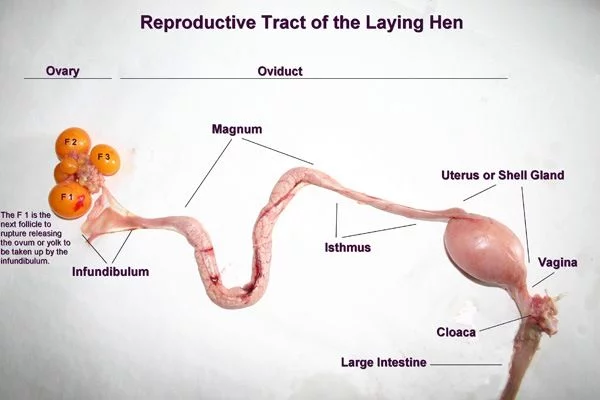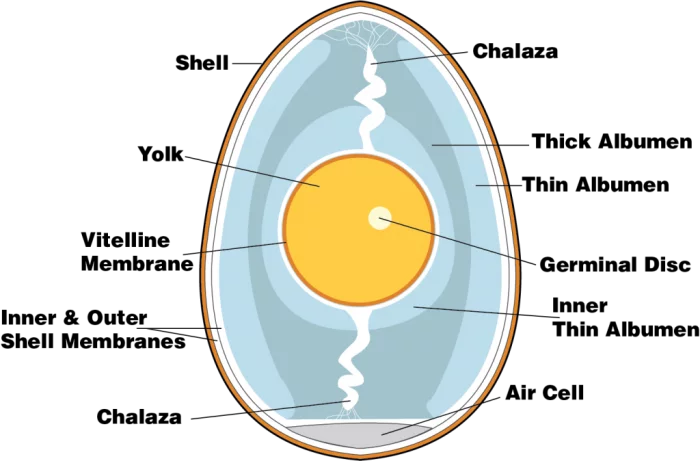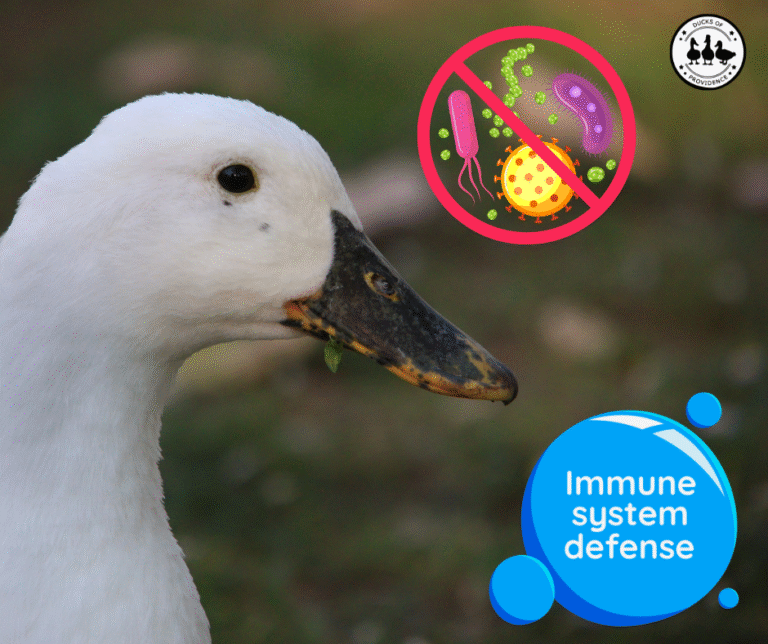
How Duck Eggs Are Made: The Science Behind Duck Egg Laying Process
Last updated on February 6th, 2025 at 07:16 pm
Have you ever wondered how duck eggs are made? We’ll take you through the whole process, from when the egg starts forming to when it’s laid. Plus, we’ll answer some of the questions you might have about duck eggs and their individual parts. So, if you’re curious about ducks and their eggs, stick around! It’s going to be an egg-citing journey!
The Biological Process of Egg Production in Ducks: From Ovulation to Oviposition
The biological process of duck egg production happens inside their reproductive tract. It all begins with ovulation, where a mature egg cell is released from the hen’s ovary. If fertilization occurs, sperm from a male duck fertilizes the egg in the oviduct. As the egg travels down the oviduct, layers of albumen (egg white), membranes, and a calcium carbonate shell are added. Once fully formed, the egg is laid by the hen through the cloaca.

If the egg is fertile and the hen exhibits broodiness, she may incubate the eggs for around 28 to 35 days, after which ducklings hatch. Factors such as nutrition, environment, and hen health are crucial for successful egg production and hatchability.
Join us as we explore this process in detail, guided by insights from Auburn University’s Department of Poultry Science:
Duck Egg Formation: The Beginning
In ducks, as in hens, the reproductive system comprises an ovary and an oviduct. Most female animals have two ovaries, but birds are unique in having just one. The ovary, located against the back body wall just left of the spinal column, is where egg production begins. The oviduct, starting at the ovary, stretches nearly two feet long and features five distinct sections: the infundibulum, magnum, isthmus, shell gland, and vagina.
The egg formation process initiates in the ovary, where yolks begin their journey. Nutrients from the duck’s diet are converted into the building blocks of the yolk—one-third protein, one-third fat, and one-third water. These are transported via the bloodstream to the ovary, where tiny tissue bags called follicles fill with yolk and grow. The largest follicle releases the yolk destined to become tomorrow’s egg, continuing this cycle daily.
The Infundibulum: Capturing the Yolk
Once a yolk matures, it ruptures from its follicle and is captured by the infundibulum, the funnel-shaped upper end of the oviduct. This marks the start of the yolk’s 24-hour journey down the oviduct. The yolk spends about 15 minutes in the infundibulum, the only stage where it isn’t yet surrounded by albumen (egg white). If fertilization is to occur, it happens here.
The Magnum: Albumen Formation
Next, the yolk enters the magnum, where it remains for approximately three hours, getting covered by a dense layer of albumen. The magnum’s spiral ridges cause the yolk to spin, creating two pig-tail-like structures called chalazae. These help keep the yolk suspended in the center of the albumen, preventing it from moving around inside the egg.
The Isthmus: Shell Membrane Development
After the magnum, the egg progresses to the isthmus. Here, shell membranes are deposited around the albumen-covered yolk, much like wrapping jello in cellophane. The egg then transitions to the shell gland, where it spends the next 20 hours.

The Shell Gland: Forming the Shell
Within the shell gland, the egg undergoes a critical transformation. Initially, the egg receives a layer of thin albumen, which helps it assume its characteristic shape. This albumen is primarily water and moves through the two shell membranes into the highly concentrated thick albumen surrounding the yolk. This process plumps the egg into its normal shape and stretches the shell membranes tightly around it.
Following this, the shell gland secretes a highly concentrated calcium carbonate solution. This solution forms the hard shell through a fascinating process where calcite crystals expand and interlock, creating a solid structure. These crystals leave microscopic pores in the shell, allowing gas exchange while still protecting the egg from bacteria.
The final step in the shell gland is the deposition of a protein solution known as the cuticle. This cuticle serves as an additional protective layer, sealing the pores and providing a barrier against pathogens. This meticulous process ensures that the egg is robust and well-protected as it prepares to leave the duck’s body.
Oviposition: The Final Stage
Oviposition, or egg laying, is the culmination of the egg-laying process. It involves a series of coordinated contractions of the duck’s reproductive tract, specifically the uterus, and relaxation of the muscular vagina. These movements facilitate the passage of the egg from the duck’s body to the external environment.
During oviposition, the egg flips end-over-end as it moves through the reproductive tract. This flipping motion helps position the egg for smooth expulsion. The contractions of the uterus push the egg towards the cloaca, while the relaxed muscles of the vagina allow for the egg’s passage without damage.
Post-Laying Process: Egg Cooling and Distribution
When an egg is laid, it fills the shell. However, a duck’s body temperature is around 106 degrees Fahrenheit, while eggs are generally laid in 20 to 40 degrees cooler environments. As the egg cools, the inner portion contracts, forming an air cell between the two shell membranes. A chick would puncture and breathe through the air in this cell before hatching.
Once fully formed, the egg embarks on another journey. If it has been fertilized, it will go to a hatchery to potentially become a duckling. If not, it will go to one of two places: an egg processing and packaging plant for distribution to grocery stores or to an egg-breaking plant. Once processed, the egg will be included in various food products such as mayonnaise, cake mixes, or salad dressing.
Watch the video to see the development of an egg inside the reproductive tract made by Auburn University’s Department of Poultry Science.
Collecting the Bounty: Egg Collection and Care
Collecting eggs is a daily task that brings great satisfaction. There’s something incredibly rewarding about gathering fresh eggs from your ducks. It’s advisable to collect eggs daily to keep them clean and prevent any breakage. If an egg is muddy or soiled, gently clean it with a dry cloth. Washing eggs can remove their protective bloom, so clean them just before use if necessary.
From Nest to Kitchen: Enjoying Duck Eggs
Duck eggs are a culinary delight. They are richer and larger than chicken eggs and have a more robust flavor. They are exceptional for baking and creating fluffier cakes and more luxurious custards. Whether you’re preparing a classic omelet or an elegant quiche, duck eggs elevate any dish.
In conclusion, the journey of a duck egg from the ovary to the table is a testament to the intricate and fascinating processes involved in poultry production. Each egg reflects the care and dedication put into duck keeping.
Do you have any recipes or tips for using duck eggs? Share your insights in the comments below. Happy egg collecting!
Lifespan and Egg Production of Ducks
In the world of duck keeping, understanding the lifecycle of our feathered friends is essential for sustainable egg production and flock management. Ducks typically have a lifespan of 6-8 years in backyard flocks, with the peak egg-laying period spanning 3-4 years. However, as ducks age, the level of egg production, egg size, and shell quality naturally decrease over time. Read more duck egg facts in our article 23 Amazing Facts About Duck Eggs: From Nutrition to Storage.
Ducks typically commence egg-laying around 5 to 7 months of age, with variations depending on factors like breed and individual health. Providing optimal nutrition, a comfortable habitat, and overall wellness supports consistent egg-laying onset.
Typically, ducks maintain consistent egg production for approximately 3 to 5 years, though this span varies due to factors like breed, health, and environment. As ducks age, both the frequency and quantity of egg production gradually diminish. While some ducks may sporadically lay a few eggs beyond this period, their productivity significantly declines compared to their prime laying years.
Related Posts about Duck Eggs:
- No Eggs from Your Ducks? Discover 7 Reasons Why
- How Often Do Ducks Lay Eggs? Breaking Down Duck Egg Production and More
- Soft-Shelled Eggs in Ducks – Everything You Need to Know
- Breaking Down Egg Binding in Ducks: What Every Duck Keeper Should Know
- Duck Eggs vs Chicken Eggs: A Comparative Analysis
- The Ultimate FAQ: How Long Do Hard-Boiled Duck Eggs Last & More!




